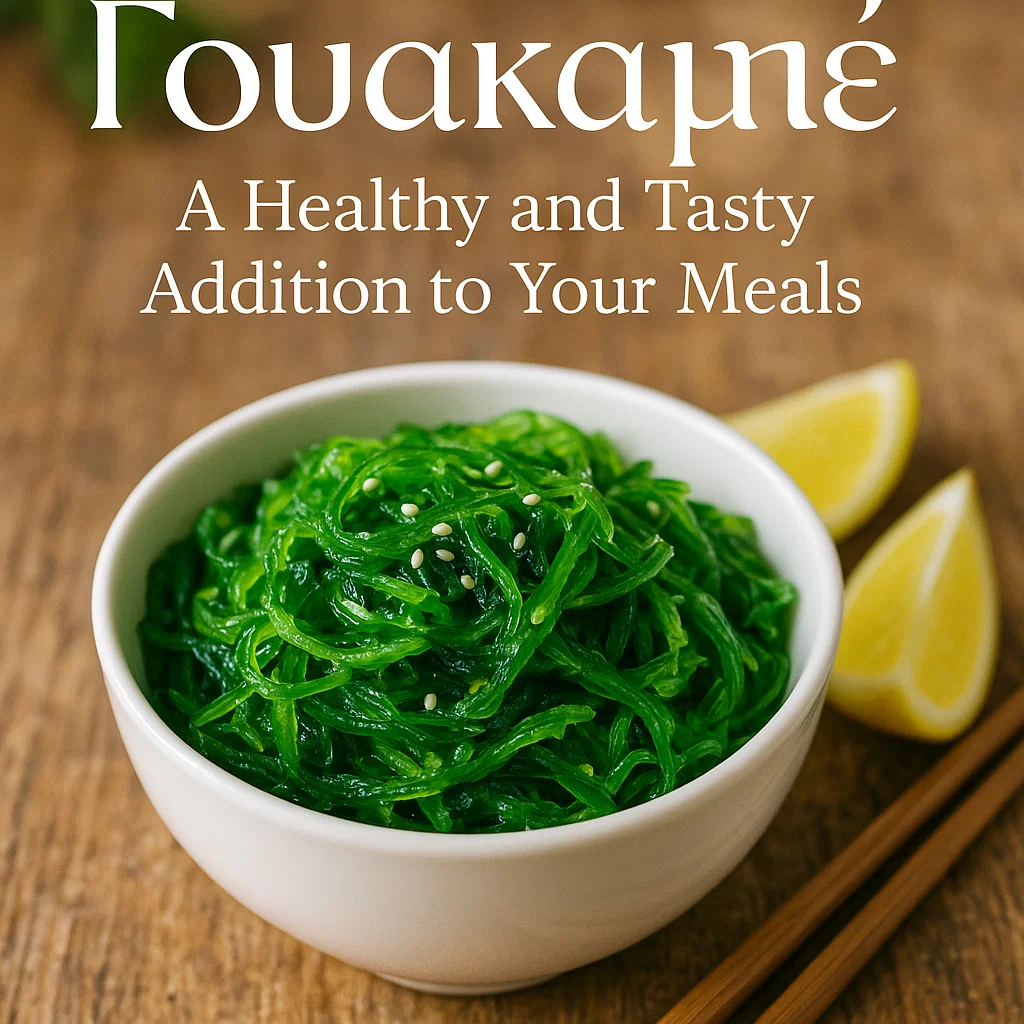Γουακαμέ (wakame) is a soft, mild seaweed popular in Japanese, Korean, and Chinese cuisine. Low in calories yet rich in minerals and vitamins, it’s perfect for soups, salads, and rice bowls. Its subtle umami taste blends well with many flavors, making it a healthy, versatile ingredient for daily meals.
A Brief History of Wakame
Wakame has been eaten for centuries in East Asia. In Japan, it was a delicacy for nobility; in Korea, it’s served to mothers after childbirth. Historically valued for its nutrition and healing properties, it has now spread worldwide. Global demand has turned wakame into a sought-after superfood with cultural and culinary importance.
What Exactly is Γουακαμέ?
Γουακαμέ is an edible brown seaweed that turns bright green when cooked or soaked. Its texture is silky yet slightly chewy, with a gentle, sweet umami flavor. Sold mainly dried, it expands significantly when hydrated, so small portions go a long way.
Nutritional Benefits of Wakame
Wakame offers iodine for thyroid health, calcium for strong bones, magnesium for muscles, and iron for energy. It contains vitamins A, C, E, and K, plus omega-3s for heart and brain function. Low in calories yet high in fiber, it helps digestion, supports weight control, and delivers unique compounds like fucoxanthin.
Culinary Versatility of Wakame
Wakame, a staple in miso soup and seaweed salad, also brings depth to ramen, poke bowls, grain dishes, and even smoothies. It blends seamlessly with Mediterranean cuisine, enriching salads, soups, and grilled seafood with gentle umami. Its mild flavor complements rather than overpowers, making it perfect for creative fusion recipes.
How to Prepare Wakame at Home
To prepare dried wakame, soak in cool water for 5–10 minutes until tender, then drain. For salted wakame, rinse thoroughly and briefly blanch. Avoid overcooking to preserve texture and color. Because it expands several times in size, start with a small amount and adjust according to your recipe’s needs.
Pairing Wakame with Greek and Mediterranean Cuisine
Wakame pairs beautifully with Greek salads, barley soups, or fakes soupa for added iodine and minerals. It works well with olive oil, lemon, and fresh herbs, blending Eastern and Mediterranean flavors. Its adaptability makes it a bridge ingredient, allowing chefs to create healthy, unique fusion dishes that surprise and delight.
Health Considerations and Moderation
Wakame is nutrient-dense but high in iodine, so moderation is important. Some packaged varieties are salty, so rinse before use. People on blood-thinners should be cautious due to vitamin K. For most, enjoying wakame two or three times weekly provides benefits without exceeding safe nutrient levels or impacting thyroid health.
Sustainability and Environmental Impact
Seaweed farming is eco-friendly, requiring no soil, fertilizer, or freshwater. Wakame absorbs carbon dioxide, helping clean oceans and reducing climate impact. Sustainable harvesting supports coastal communities and marine ecosystems. Choosing responsibly sourced wakame means enjoying a healthy, delicious food while making a positive contribution to environmental protection and global sustainability.
Final Thoughts
From ancient traditions to modern kitchens, γουακαμέ remains a flavorful, nutritious, and sustainable ingredient. Its mild umami and easy preparation make it suitable for countless recipes, from soups to fusion salads. Incorporating wakame into your diet enhances flavor, boosts nutrition, and supports eco-friendly practices, making it a small change with big benefits.
FAQs
What is Fiberglass HT52H used for?
Fiberglass HT52H is commonly used in marine, industrial, and construction applications due to its high durability, corrosion resistance, and lightweight structure. It provides excellent reinforcement, making it suitable for building strong yet lightweight components in boats, structural panels, insulation, and industrial machinery parts for long-term, reliable performance.
How does Fiberglass HT52H compare to other fiberglass types?
Compared to standard fiberglass, HT52H offers higher tensile strength, better heat resistance, and improved durability. It can handle extreme weather and heavy loads more effectively. This makes it a preferred choice for projects where performance, longevity, and structural stability are crucial, ensuring reduced maintenance needs over time.
Is Fiberglass HT52H expensive?
Fiberglass HT52H costs more than regular fiberglass due to its enhanced properties. However, its long lifespan and reduced maintenance often make it more cost-effective in the long run. Investing in higher quality ensures better resistance to wear, environmental damage, and overall replacement costs, delivering greater long-term value.
How do I maintain Fiberglass HT52H products?
Maintenance is straightforward—clean surfaces regularly to prevent dirt buildup, inspect for cracks or damage, and apply protective coatings if exposed to harsh environments. For marine use, rinsing with fresh water after saltwater exposure helps prevent degradation. Regular checks extend its functional life and preserve optimal strength.
Where can I buy Fiberglass HT52H?
Fiberglass HT52H can be purchased from specialized industrial suppliers, marine equipment stores, and online marketplaces. Always verify product specifications before buying to ensure authenticity. Trusted suppliers offer quality certification, bulk purchase options, and guidance to help match your exact project requirements for maximum performance and durability.


